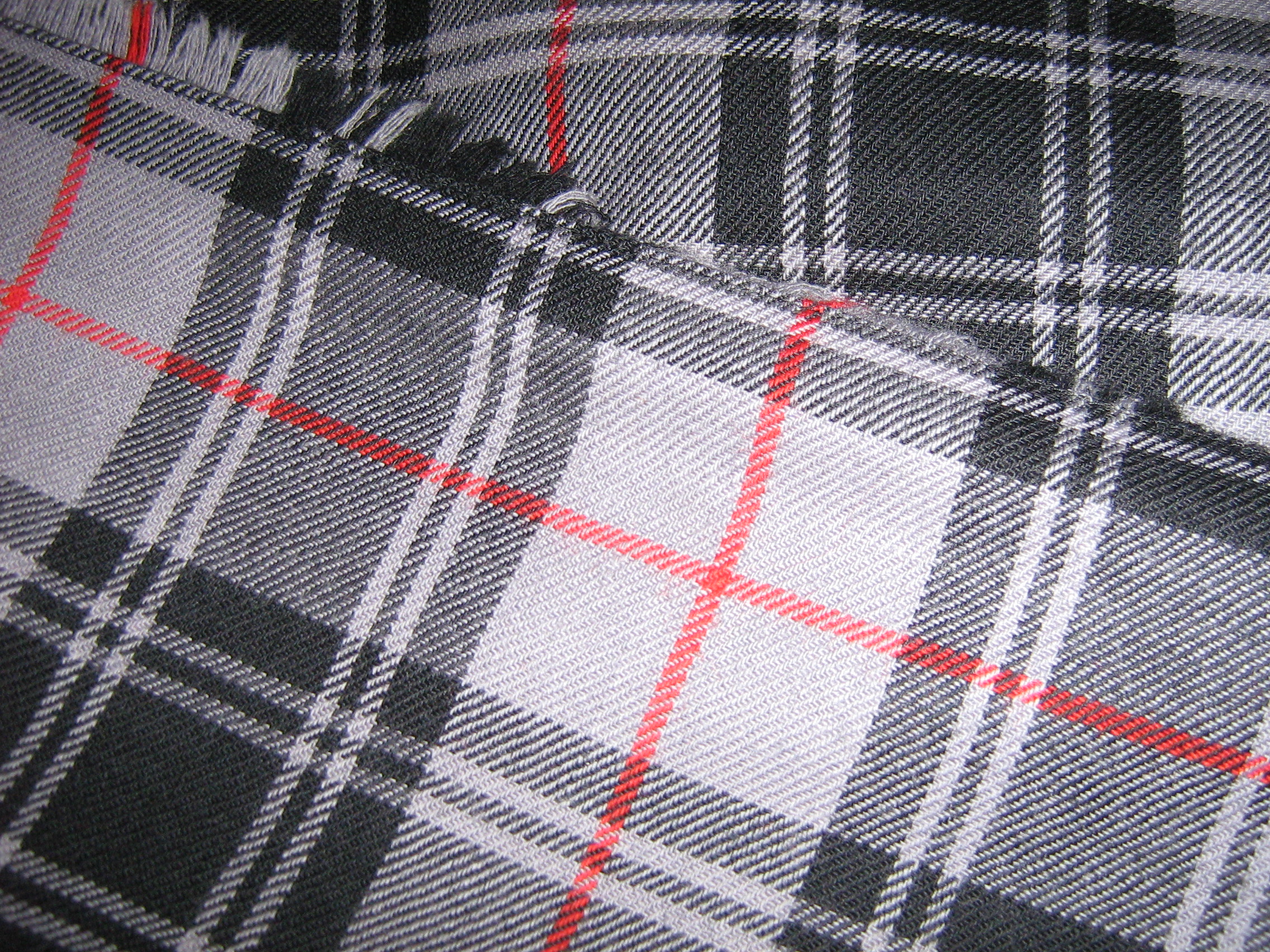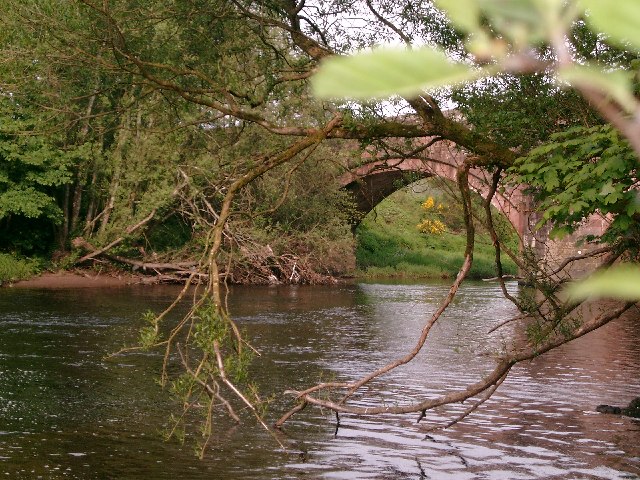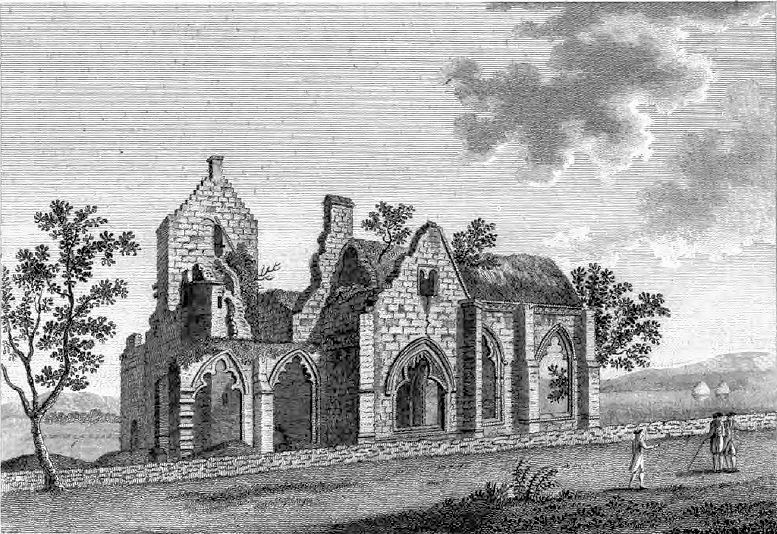|
Moffat
Moffat is a burgh and parish in Dumfriesshire. Part of the Dumfries and Galloway local authority area in Scotland, it lies on the River Annan, with a population of around 2,500. It was a centre of the wool trade and a spa town. Moffat is around to the southeast of Glasgow, southwest of Edinburgh, northeast of Dumfries and northwest of Carlisle. The Moffat House Hotel, located at the northern end of the High Street, was designed by John Adam. The nearby Star Hotel, a mere 20 ft (6 m) wide, was listed in the Guinness Book of Records as the narrowest hotel in the world. Moffat won the Britain in Bloom contest in 1996. Moffat is home to Moffat toffee. The town is held to be the ancestral seat of Clan Moffat. The Devil's Beef Tub near Moffat was used by the members of Clan Moffat and later the members of Clan Johnstone to hoard cattle stolen in predatory raids. Early tourism as a spa town From 1633 Moffat began to grow from a small village into a popular s ... [...More Info...] [...Related Items...] OR: [Wikipedia] [Google] [Baidu] |
Clan Moffat
Clan Moffat is a Border Scottish clan of ancient origin. The clan was leaderless and obscure from the mid 16th century until 1983, when Francis Moffat of that Ilk was recognised as the hereditary chief of the clan by Lord Lyon King of Arms.Way, George and Squire, Romily. ''Collins Scottish Clan & Family Encyclopedia''. (Foreword by The Rt Hon. The Earl of Elgin KT, Convenor, The Standing Council of Scottish Chiefs). Published in 1994. Pages 274 - 275. History Origins of the clan The Clan Moffat are a family from the Scottish Borders who were powerful and influential as far back as the time of William Wallace.Way, George and Squire, Romily. ''Collins Scottish Clan & Family Encyclopedia''. (Foreword by The Rt Hon. The Earl of Elgin KT, Convenor, The Standing Council of Scottish Chiefs). Published in 1994. Pages 274 - 275. It is likely that the ancestor of the Moffats gave their name to the town of Moffat in Dumfriesshire. The name Moffat may be of Norse origin. William de ... [...More Info...] [...Related Items...] OR: [Wikipedia] [Google] [Baidu] |
Moffat - Sulphurous Well
Moffat is a burgh and parish in Dumfriesshire. Part of the Dumfries and Galloway local authority area in Scotland, it lies on the River Annan, with a population of around 2,500. It was a centre of the wool trade and a spa town. Moffat is around to the southeast of Glasgow, southwest of Edinburgh, northeast of Dumfries and northwest of Carlisle. The Moffat House Hotel, located at the northern end of the High Street, was designed by John Adam. The nearby Star Hotel, a mere 20 ft (6 m) wide, was listed in the Guinness Book of Records as the narrowest hotel in the world. Moffat won the Britain in Bloom contest in 1996. Moffat is home to Moffat toffee. The town is held to be the ancestral seat of Clan Moffat. The Devil's Beef Tub near Moffat was used by the members of Clan Moffat and later the members of Clan Johnstone to hoard cattle stolen in predatory raids. Early tourism as a spa town From 1633 Moffat began to grow from a small village into a popular sp ... [...More Info...] [...Related Items...] OR: [Wikipedia] [Google] [Baidu] |
Moffat Town Hall
Moffat Town Hall is a municipal building in the High Street in Moffat, Dumfries and Galloway, Scotland. The structure, which is used as community events venue, is a Category B listed building. History In the early 1820s, a group of local businessmen decided to form a company known as the "Moffat Bath Company" to finance and commission a new bath house for users of the sulphurous spring in the town. Users of the spring had already included the poet, Robert Burns, and the biographer, James Boswell. The plan was to take advantage of increasing demand by piping the sulphurous water down from the spring to a tank, and then on to the new bath house in the centre of the town. The new building was designed by Walter Newall in the neoclassical style, built in coursed whinstone with ashlar dressings and was completed in 1827. The design involved a broadly symmetrical single-storey main frontage with seven bays facing onto the High Street with the end bays projected forward as pavilions. ... [...More Info...] [...Related Items...] OR: [Wikipedia] [Google] [Baidu] |
Dumfries And Galloway
Dumfries and Galloway (; ) is one of the 32 unitary council areas of Scotland, located in the western part of the Southern Uplands. It is bordered by East Ayrshire, South Ayrshire, and South Lanarkshire to the north; Scottish Borders to the north-east; the English county of Cumbria, the Solway Firth, and the Irish Sea to the south, and the North Channel (Great Britain and Ireland), North Channel to the west. The administrative centre and largest settlement is the town of Dumfries. The second largest town is Stranraer, located to the west of Dumfries on the North Channel coast. Dumfries and Galloway corresponds to the counties of Scotland, historic shires of Dumfriesshire, Kirkcudbrightshire, and Wigtownshire, the last two of which are collectively known as Galloway. The three counties were combined in 1975 to form a single regions and districts of Scotland, region, with four districts within it. The districts were abolished in 1996, since when Dumfries and Galloway has been a ... [...More Info...] [...Related Items...] OR: [Wikipedia] [Google] [Baidu] |
Dumfriesshire
Dumfriesshire or the County of Dumfries or Shire of Dumfries () is a Counties of Scotland, historic county and registration county in southern Scotland. The Dumfries lieutenancy areas of Scotland, lieutenancy area covers a similar area to the historic county. In terms of historic counties it borders Kirkcudbrightshire to the west, Ayrshire to the north-west, Lanarkshire, Peeblesshire and Selkirkshire to the north, and Roxburghshire to the east. To the south is the coast of the Solway Firth, and on the other side of the border between Scotland and England the England, English county of Cumberland. Dumfriesshire has three traditional subdivisions, based on the three main valleys in the county: Annandale, Dumfries and Galloway, Annandale, Eskdale, Scotland, Eskdale and Nithsdale. These had been independent provinces of Scotland, provinces in medieval times but were gradually superseded as administrative areas by the area controlled by the sheriff principal, sheriff of Dumfries, or ... [...More Info...] [...Related Items...] OR: [Wikipedia] [Google] [Baidu] |
Clan Johnstone
Clan Johnstone is a Border Reivers, Border Reiver Scottish clan.Way, George and Squire, Romily. ''Collins Scottish Clan & Family Encyclopedia''. (Foreword by The Rt Hon. The Earl of Elgin KT, Convenor, The Standing Council of Scottish Chiefs). Published in 1994. Pages 178 - 179. History Origins of the clan The Clan Johnstone were once one of the most powerful of the Border Reivers, Border Reiver Scottish clans. They originally settled in Annandale, Dumfries and Galloway, Annandale and for more than six hundred years they held extensive possessions in the west of the Scottish Marches, where they kept watch against the England, English. The first of the clan to be recorded was John Johnstone, whose son, Gilbert, is found in records after 1194. Sir John Johnstone was a knight of the county of Dumfries. He is found on the Ragman Rolls of 1296, swearing fealty to Edward I of England. In 1381 his great-grandson son was appointed Lord Warden of the Marches, Warden of the Western Marc ... [...More Info...] [...Related Items...] OR: [Wikipedia] [Google] [Baidu] |
Moffat Toffee
Moffat toffee is a boiled sweet originating from and made in the Scottish town of Moffat Moffat is a burgh and parish in Dumfriesshire. Part of the Dumfries and Galloway local authority area in Scotland, it lies on the River Annan, with a population of around 2,500. It was a centre of the wool trade and a spa town. Moffat is arou .... The confection has a tangy but sweet centre which gives the sweet its unusual flavour. The Moffat Toffee old family recipe is thought to have been used for the first time commercially by present owner Blair Blacklock's great-grandmother, Janet Cook Johnstone, around the late 19th century. The toffee was made by hand in batches of about 7 lbs (3 kilos) at the time. It was sold mainly in uncut flat rounds of varying sizes. To this day it is still made in Moffat and over 300 kilos of the sweet are made every week. The sweet can be found in many sweet shops, garden centres and other retail outlets in Scotland, including the Moffat Toffee S ... [...More Info...] [...Related Items...] OR: [Wikipedia] [Google] [Baidu] |
River Annan
The River Annan is a river in south-west Scotland. It rises on Annanhead Hill and flows through the Devil's Beef Tub, Moffat and Lockerbie, reaching the sea at Annan, Dumfries and Galloway after about 40 miles. Name The etymology of the River Annan is unknown, although some sources suggest it may mean simply "water", from a Celtic language. It gave its name to Annandale, a former stewartry comprising a large portion of modern Dumfriesshire, and to the port town of Annan near its mouth. Description The Annan rises on Annanhead Hill, five miles north of Moffat, near the source of the Tweed ( away), and also close to the source of the Clyde ( away). It then flows through the Devil's Beef Tub, where it is joined by a secondary source that rises on Hartfell. It then flows past the town of Moffat and Lockerbie. Two miles out of Moffat, it is joined by the Moffat Water flowing westward from Loch Skene and the Evan Water flowing eastward from the upper part of Lanarkshire. ... [...More Info...] [...Related Items...] OR: [Wikipedia] [Google] [Baidu] |
John Adam (architect)
John Adam (5 March 1721 – 25 June 1792) was a Scottish architect, building contractor and supervisor. Life Born in Linktown of Abbotshall, now part of Kirkcaldy, Fife, he was the eldest son of architect and entrepreneur William Adam and his wife Mary Robertson (1698–1761). His younger brothers Robert and James Adam also became architects. The Adam family moved to Edinburgh in 1728, as William Adam's career as a designer of country houses began to take off. John attended Dalkeith Grammar School, outside the city, although he did not proceed to university as he was already being involved in the family businesses. However, the family home became a hub of the Scottish Enlightenment, with numerous Edinburgh ''virtuosi'' visiting. It is believed his father allowed him to do some work on Montrose Mausoleum in Aberuthven, Perthshire, in 1736, for his name is in an inscription in the northern wall. During the 1740s, William was gradually handing over control to his eldest ... [...More Info...] [...Related Items...] OR: [Wikipedia] [Google] [Baidu] |
Dumfries
Dumfries ( ; ; from ) is a market town and former royal burgh in Dumfries and Galloway, Scotland, near the mouth of the River Nith on the Solway Firth, from the Anglo-Scottish border. Dumfries is the county town of the Counties of Scotland, historic county of Dumfriesshire. Before becoming King of Scots, Robert the Bruce killed his rival John Comyn III of Badenoch at Greyfriars Kirk in the town in 1306. The Young Pretender had his headquarters here towards the end of 1745. In World War II, the Norwegian armed forces in exile in Britain largely consisted of a brigade in Dumfries. Dumfries is nicknamed ''Queen of the South''. This is also the name of the town's Queen of the South F.C., football club. People from Dumfries are known colloquially in Scots language as ''Doonhamers''. Toponymy There are a number of theories on the etymology of the name, with an ultimately Common Celtic, Celtic derivation (either from Common Brittonic, Brythonic, Old Irish, Gaelic or a mixture of b ... [...More Info...] [...Related Items...] OR: [Wikipedia] [Google] [Baidu] |
Devil's Beef Tub
The Devil's Beef Tub (Marquis of Annandale's Beef-Tub, Beef-Stand, MacLaren's Leap) is a deep, dramatic hollow in the hills north of the Scottish town of Moffat. The hollow is formed by four hills, Great Hill, Peat Knowe, Annanhead Hill and Ericstane Hill. It is one of the two main sources of the River Annan. Etymology The unusual name derives from its use to hide stolen cattle by the Border Reivers of the Johnstone clan who were referred to by their enemies as "devils"; it is also called ''Marquis of Annandale's Beef-Tub'' (or ''Beef-Stand'') after the Earl of Annandale and Hartfell, Lord of Annandale, chief of the raiding "loons" (here meaning "lads", rather than "lunatics"); the name may also refer to the resemblance the valley bears to a tub used for preserving meat. The Scots Dialect Dictionary, first published 1911 by Chambers and compiled by the lexicographer Alexander Warrack, gives the following; “deil’s beef-tub n. a roaring linn”. In the eighteenth and nineteen ... [...More Info...] [...Related Items...] OR: [Wikipedia] [Google] [Baidu] |
Glasgow
Glasgow is the Cities of Scotland, most populous city in Scotland, located on the banks of the River Clyde in Strathclyde, west central Scotland. It is the List of cities in the United Kingdom, third-most-populous city in the United Kingdom and the 27th-most-populous city in Europe, and comprises Wards of Glasgow, 23 wards which represent the areas of the city within Glasgow City Council. Glasgow is a leading city in Scotland for finance, shopping, industry, culture and fashion, and was commonly referred to as the "second city of the British Empire" for much of the Victorian era, Victorian and Edwardian eras. In , it had an estimated population as a defined locality of . More than 1,000,000 people live in the Greater Glasgow contiguous urban area, while the wider Glasgow City Region is home to more than 1,800,000 people (its defined functional urban area total was almost the same in 2020), around a third of Scotland's population. The city has a population density of 3,562 p ... [...More Info...] [...Related Items...] OR: [Wikipedia] [Google] [Baidu] |







